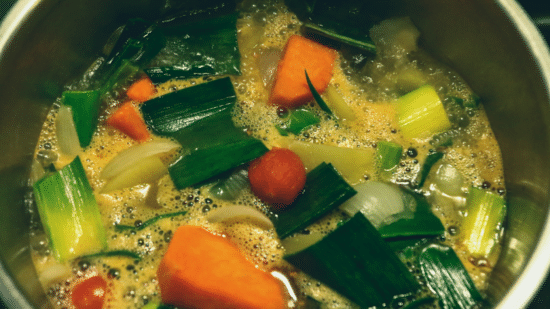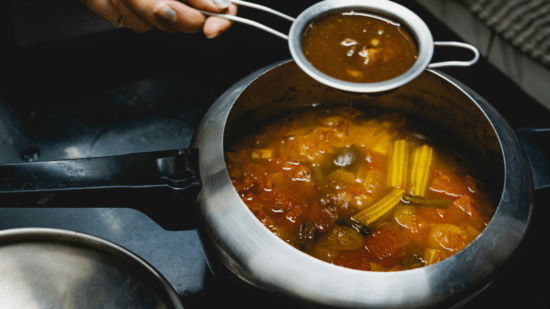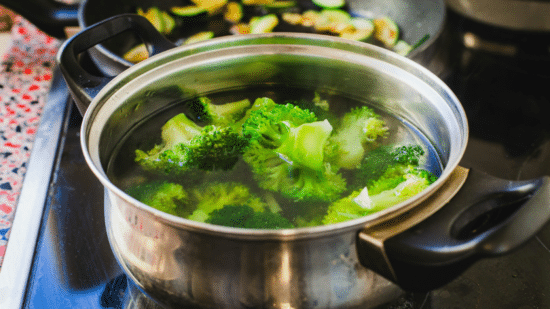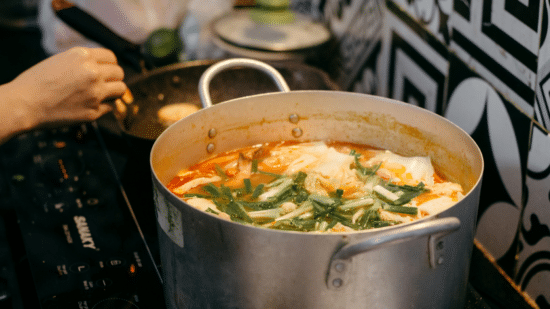
I don’t care what the calendar says—soup doesn’t need a season. A good bowl always hits the spot. Maybe it’s pho in the middle of a heatwave or onion soup on a rainy Tuesday. No wrong time for that kind of comfort. But if you’ve ever tried to make soup at home and thought, “Why doesn’t mine taste like it does at that little place on the corner?”—you’re not alone. Let’s figure out how to fix that.
Homemade Stock

Flat soup usually means weak broth. Restaurants don’t use boxed stock—they make their own, and that’s why it tastes richer. Homemade stock doesn’t need fancy skills, just time and a pile of bones or veggie scraps. Let it bubble gently and do its thing. You’ll end up with something way deeper and more flavorful. Can’t make it? Go for a frozen bone broth or ask your butcher. Skip the boxed stuff. It just doesn’t hold up.
Prepared Low and Slow

Soup doesn’t like to be rushed. Letting it simmer gently brings out so much more depth. The longer it hangs out on the stove, the better it gets. It’s not just about flavor either—taking your time helps everything cook evenly. So cut your veggies the same size, sweat them slowly, and let the whole pot take its time. You’re building something warm and layered. Just let it do what it needs to do, and don’t crank the heat.
Order of Operations

Soup loves a good routine. Start with browning the meat if you’re using it, then set it aside. Let the onions sweat in those drippings, toss in the garlic, and go from there. Harder veggies need a head start, so get them in early. Lighter ones come later. Spices too. If you’re thickening with flour, let that cook before any liquid hits the pot. Wine goes in before broth. It’s just about layering things so every piece gets its moment.
Ratios of Food

A good soup feels balanced. Not too much stuff floating around, not too thin either. So it helps to portion things before you even turn on the stove. Meat, veggies, and grains—have them all set. Start with less broth than you think you’ll need. Grains and noodles soak it up fast. If it gets too soupy, you can thicken it with a little cornstarch mixed into the broth. Just add it slowly and stir. You’ll hit the texture you want without overdoing it.
Seasoning

Salt early, salt often. That’s the move. Toss in a pinch after the onions sweat. Add a little more once the broth hits. Keep tasting. It’s not about dumping in a bunch at the end. Let it build. Salt needs time to soak into everything, so each layer matters. Herbs and spices help, too, but salt does the heavy lifting. If it tastes good at every step, you’re on the right track. Don’t wait for a fix later in the season as you go.
Contrast Your Textures

Soup feels better when there’s a mix of smooth and crunchy. So, reserve some broth before blending to adjust the thickness. Use a strong blender to whip air in, making it silky. If you want to step it up, strain the soup for extra smoothness. Then, add something crunchy like toasted breadcrumbs or roasted seeds on top. Those little bursts of texture bring life to your bowl and make every spoonful more interesting and satisfying.
Garnishes

Adding a garnish can lift your soup in a snap. Think about something creamy like sour cream or Greek yogurt. Crunchy bits like toasted nuts or crispy chickpeas also work great. A drizzle of flavored oil or a spoonful of a bright sauce like pesto adds a fresh punch. Fresh herbs bring color and a burst of flavor, too. Pick garnishes that match the soup’s flavors so everything feels balanced and tasty, not random.
Layer the Flavors

Building flavor happens one step at a time. Start with aromatics like garlic and onions and cook them slowly so they soften and release their natural sweetness. Add spices or sauces next to deepen the base. Pour in broth or stock, which adds richness. Toss in herbs or acidic ingredients near the end to brighten things up. Each layer adds something different, so your soup tastes full and balanced. Just take it slow and add flavors bit by bit.
Invest in a Vitamix

Restaurants rely on a Vitamix to get that ultra-smooth soup texture. It handles tough ingredients better than most blenders. You can turn chunky veggies or fibrous bits into creamy perfection with ease. It’s not the cheapest tool, but it’s worth it if silky soup matters to you. Also, an immersion blender can help with quick blending right in the pot. Together, they make finishing your soup easy and professional-level smooth.
Make Restaurant-Style Soup at Home

Start with homemade stock and layer in good ingredients. Pay attention to texture by adding crunchy or creamy toppings. Use a Vitamix or a strong blender for that silky finish. Season your soup as you go so flavors build naturally. Follow these simple steps, and you’ll have soup that tastes like it came from your favorite restaurant—all from your own kitchen.

